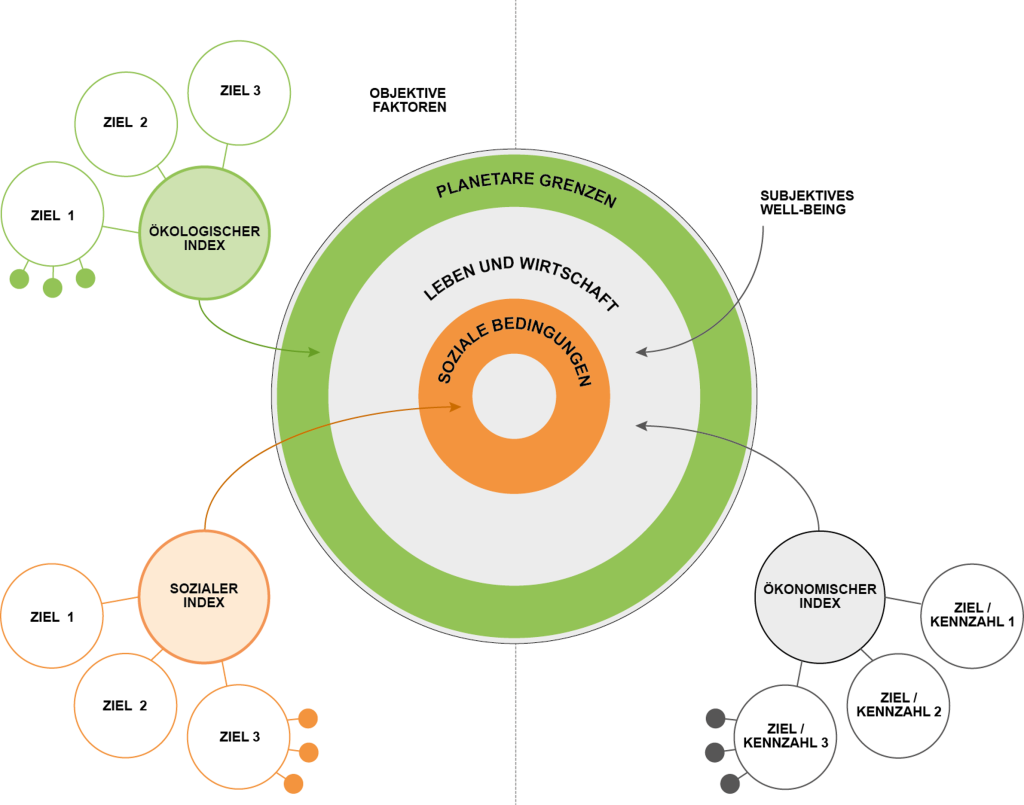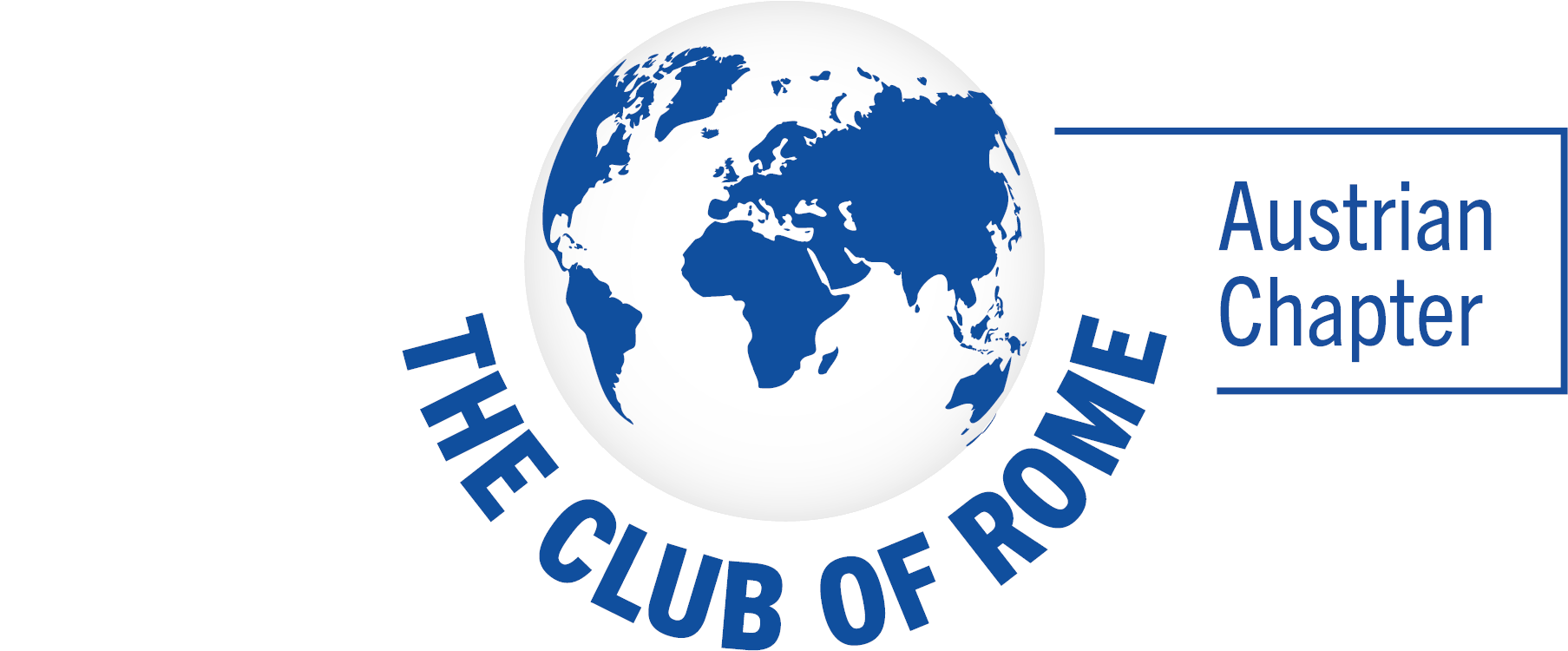The image of a doughnut economy formulated by Kate Raworth describes a society and economy that enables a good life for all within the planetary boundaries set by nature but also within social boundaries. Beyond the SDGs, further (especially qualitative) goals should also be considered, which should also relate to people’s inner well-being.
The concept of measuring progress in terms of gross domestic product (GDP) was developed some 80 years ago in close coordination with corresponding scientific findings (of Keynesianism as a response to the prevailing neoclassicism) and political programmes (of deficit spending – after the Great Depression). Economic growth is the implicit goal. Indicators must be derived from targets – not vice versa. For a transformation towards a more sustainable and equitable society, the measurement of progress beyond the financial must be broadened in the sense of the Sustainable Development Goals. Both are scientifically (e.g. UniNEtZ) and politically (e.g. Agenda 2030) justified. In the framework of the Global Reporting Initiative (GRI), stakeholder participation has been defined as an important principle for the development of sustainability assessment frameworks (Hardi & Zdan, 1997).
In 2020/21, the UniNEtZ project created a conceptual framework on how to measure progress towards sustainability (“beyond GDP”) (Hinterberger and Spittler 2021 – see the figure/still to be translated).
.

Thus, in a participatory, transdisciplinary process, three, five or seven goals should be formulated for each of the three sustainability dimensions (ecological, social, economic), for which valid measurement concepts are then to be developed, the feasibility of which can be verified in pilot studies. The concrete goals can be developed and visualised by means of a visioning process.
The task now is to develop a comprehensive system of indicators in the sense of a Well-Being Index that describes in a directionally reliable and easily understandable way whether and to what extent individual actors, concrete developments and politicians as well as entire countries and regions contribute to the achievement of the global goals.
As shown in Figure 1, social, ecological and economic indicators are to be defined for Austria within the framework of the concept of the doughnut economy (Raworth, 2012) based on the SDGs.
It is important that the impacts of human activities are within the existing planetary boundaries and contribute to the achievement of social goals in order to ensure human well-being. It is important that the micro-level indicators can be related to the macro-level in order to determine how a person, household, company, product or service contributes to the achievement of goals at the macro (global, regional) level.
The individual well-being of all (in the sense of “Leave No One Behind”) can be the guiding star of such a development. The SDGs and their 169 sub-goals (targets) form the framework when it comes to recognising whether development in individual areas that contribute to well-being is going in the right direction and can be achieved within a set timeframe (e.g. climate neutrality or the eradication of poverty by 2040).
Both objective conditions and subjective well-being are important for the assessment. The Club of Rome’s Well-being Index should therefore capture and represent both. For the objective factors, target values must first be defined for social indicators and threshold values for ecological indicators. For each indicator, the “distance to target” can be determined, e.g. in “percent target achievement” or more generally (and in analogy to the GWB) x out of 10 points.
Possible schematic representation of the indicators of the three dimensions of sustainability: ecological, economic, social
.

